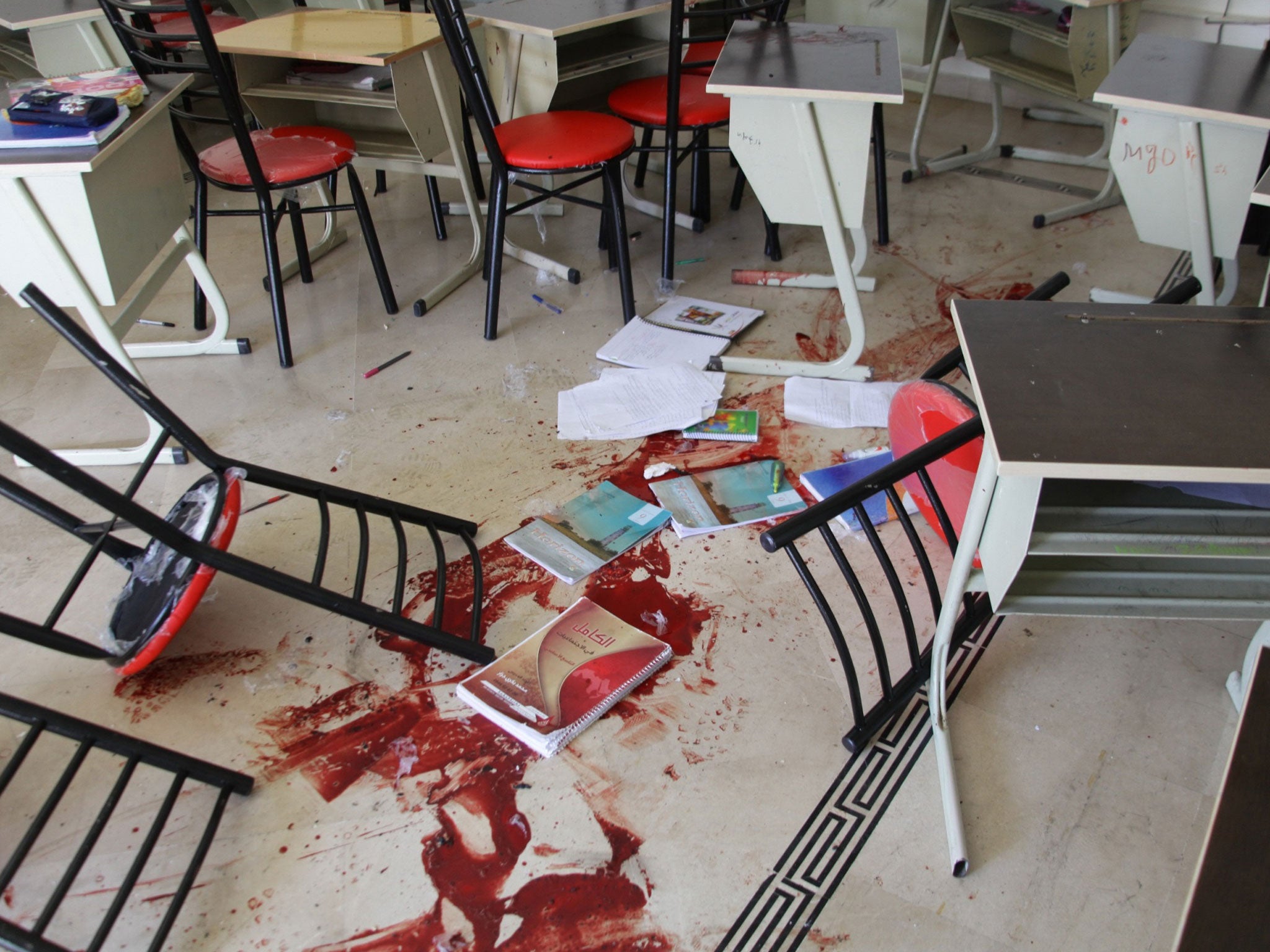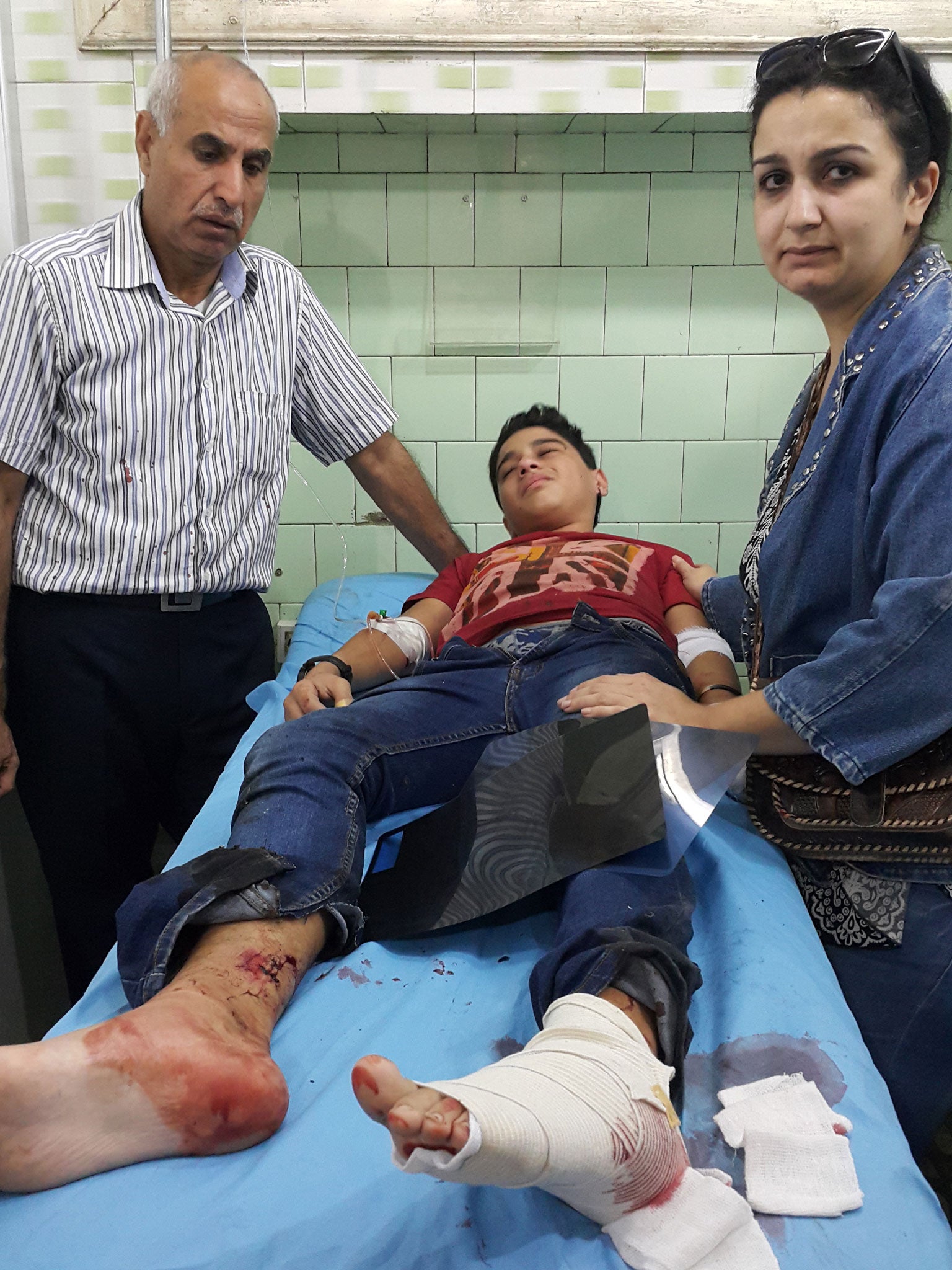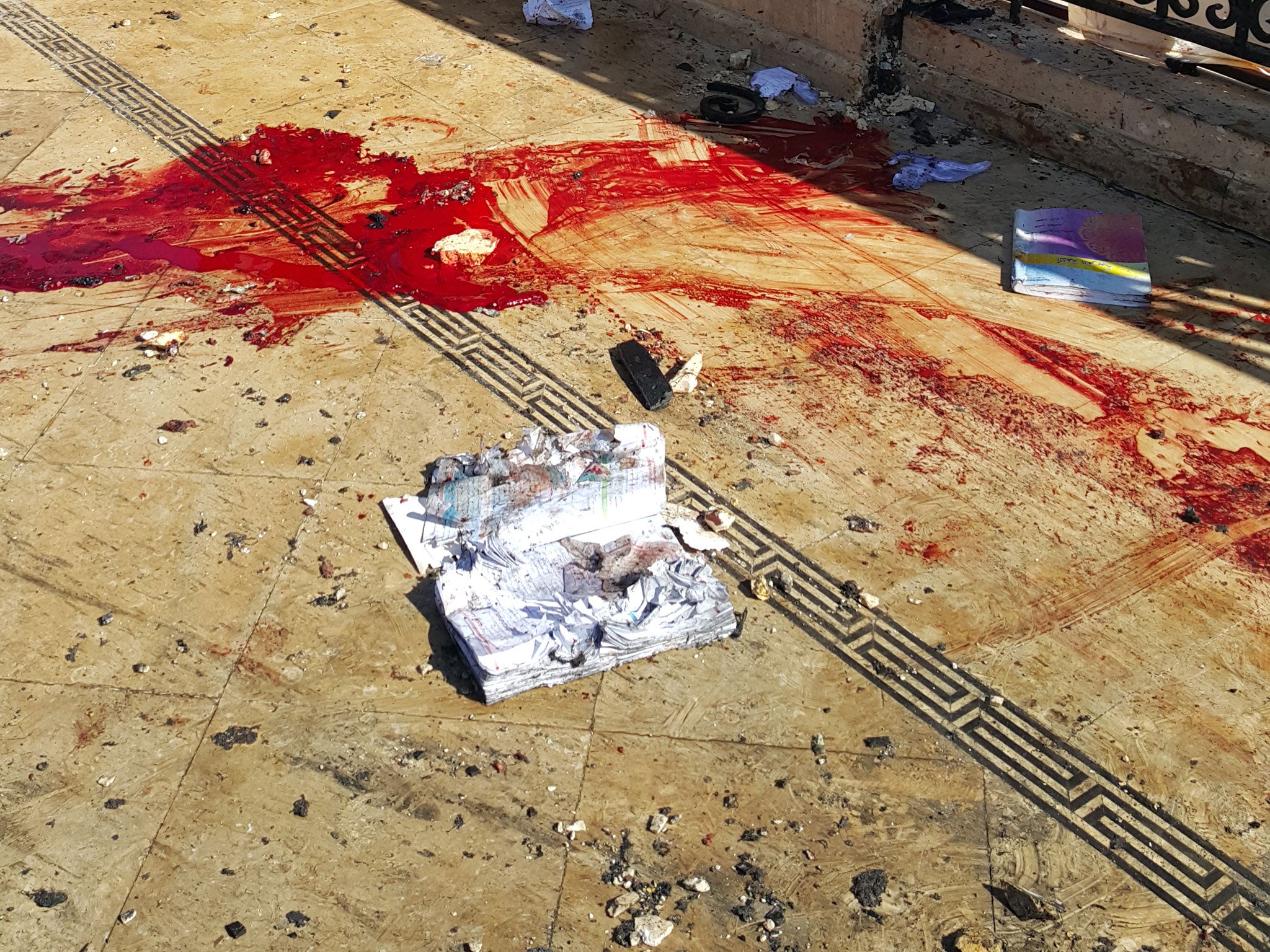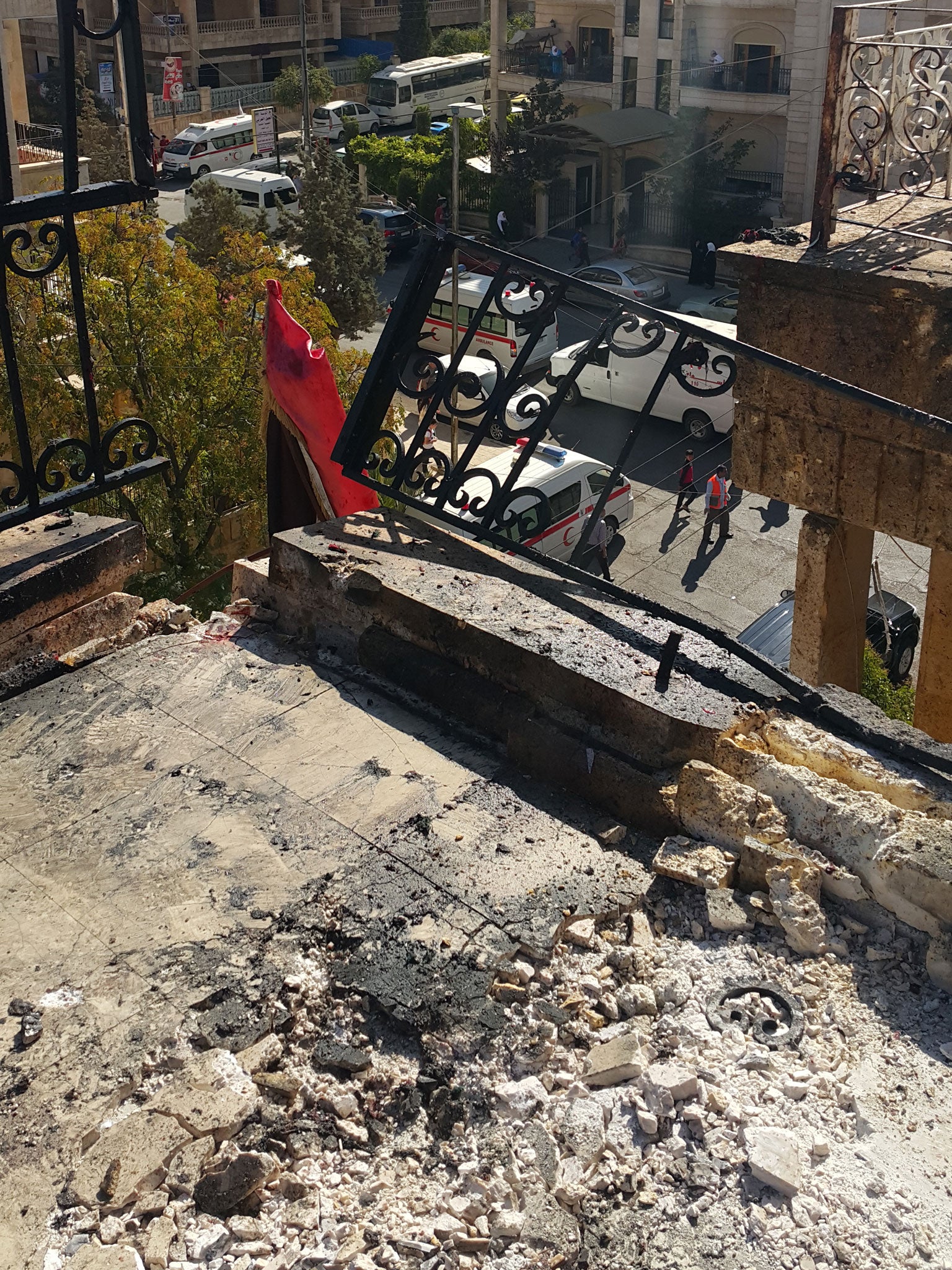Massacre of innocents: As Syria and Russia bombard eastern Aleppo children are also dying in the west of the city
As the world rightly decries the savagery committed in eastern Aleppo, in the west of the city there is also suffering as 'rebel' shells rain down, writes Robert Fisk

Your support helps us to tell the story
From reproductive rights to climate change to Big Tech, The Independent is on the ground when the story is developing. Whether it's investigating the financials of Elon Musk's pro-Trump PAC or producing our latest documentary, 'The A Word', which shines a light on the American women fighting for reproductive rights, we know how important it is to parse out the facts from the messaging.
At such a critical moment in US history, we need reporters on the ground. Your donation allows us to keep sending journalists to speak to both sides of the story.
The Independent is trusted by Americans across the entire political spectrum. And unlike many other quality news outlets, we choose not to lock Americans out of our reporting and analysis with paywalls. We believe quality journalism should be available to everyone, paid for by those who can afford it.
Your support makes all the difference.There is a problem with the story I am about to tell you. It is bloody. It is about the massacre of innocents – six of them, the youngest a little girl of two – blasted to death by shell fire in Aleppo.
Three of them were killed in their junior school, a teenage boy blown clean off the roof next to his classroom four stories down into the street where he lay in a pool of blood. The shrapnel tore into his friends and when I reached the school, I was walking across floors swamped with crimson liquid.
But reader, bare with me. For the problem with my grim – some might say gruesome – but certainly tragic report is that the victims were slaughtered by the guns of the ‘rebels’ of eastern Aleppo. These children were killed in western Aleppo, in the sector of the city held by the Syrian regime and its army. And that is why you will not know their names. The suffering of the survivors, one of the wounded child survivors, groaning in agony as a doctor picked a piece of metal from his face with a scalpel in the Al-Razi Hospital, will be quite unknown to you.
None of what I shall describe excuses the savagery visited upon the people of eastern Aleppo by Syrian and Russian bombs. Indeed, when I asked the senior Syrian police officer at the wrecked school – he was standing on the rood beside a bloody puddle — if this might be some sort of revenge by the armed groups in the east, he side-stepped the question. No, no, no, no, no – No!” he shouted. “They have hit other schools before now – they are just animals, they don’t even know the meaning of childhood. When we opened the crossing points for the people of eastern Aleppo last week, we even cleared these schools as a reception place for them.”

The first shell crashed into the corner of the roof of the privately-run National School of Aleppo at almost exactly 11am, blasting part of the parapet into the street below, along with one of the pupils who was taking a class break on the patio outside his classroom. By the time I arrived, they were taking the corpses out of the school door in blue sheets. One of them was 15-year old Omar Deiry. Another was Imad Sabbagh who was also 15. The third was still unidentified when scores of parents – being a private school in an urban area of tree-lined streets of semi-detached stone apartments, they were well dressed and quite unused to the idea that violence might touch their families – ran towards the building, weeping and shrieking.
Given the world’s understandable – and justified – horror at the suffering of eastern Aleppo’s people, and its apparent inability to grasp that its defenders also kill indiscriminately, I suppose we must add that the pattern of mortar fragment marks around the impact point on the school roof left no doubt that the projectile was fired from the east. This was no devilishly-designed hidden bomb placed by the authorities to kill children for propaganda purposes. Fired by the Islamist Jabhat al-Nusra group or its allies – the same name-changed al-Qaeda of 9/11 infamy whose ranks are now referred to respectfully as ‘rebels’ by the rest of the world – it was directed into a residential district of western Aleppo, just like the second shell which landed on an apartment in the Hamdamiyeh district.

By the time I reached the University Hospital a mile from the Razi medical centre, this attack’s three victims – all killed just after breakfast in their home – had just arrived. Khanom Fallaha was two and I found her lying on a trolley, her face grey with dust, slightly turned to the right as if sleeping, her clothes and tiny shoes black from the shell blast, although a bright, shiny earring remained in her left ear. Behind her were her two brothers, ten-year old Khalil and 11-year old Khaled.
One of them – I don’t know which — lay with his face towards the ceiling in an uncomfortable, ungainly way. And of course, being human, familiar thoughts crept into one’s mind. Yes, that is how her mother dressed Khanom this morning on her last day on earth, that is what she was wearing when she had breakfast with her brothers, and… Well now, like tens of thousands of other children in Syria, she was gone, departed from the world she scarcely knew, part of the past, a mere figure in the grotesque and massively abused casualty statistics of the dead whose real total we shall never know or, one day, much care about. Tonight, she will be in the earth.

Is this sentimental? I don’t think so. We weep over the dead children of eastern Aleppo, under siege by the Syrian regime. But Khanom is equally worthy of the world’s sympathy. Neither she, nor her brothers, nor the three children at the school, chose which side of Aleppo they would live in. But of course, as always, there is astonishment as well as shock when you talk to the children who survived. Although in great pain and with blood on his feet, 14-year old Ahmed Skeifeh, told me that he was still in the classroom beside the roof when the shell exploded. I had seen English textbooks and a half-eaten bun on the floor and on the broken desks and – incredibly, amidst his pain – Ahmed chose to speak in perfect English. “I fell onto the floor and my friends were all with me and I saw my friends fall down and I saw my friends die with my own eyes,” he said. “I can’t remember anything more. I ran out of the room.” The boy was propped up on his hospital bed, one of five boys seriously injured, his teacher standing beside him, his arm around the boy’s head.
A younger boy lay on a hospital trolley, a doctor picking metal out of his face, all his limbs heavily bandaged. He was writhing in agony, moving his legs wildly, comforted by the director of the school, Sayed Kadayer. Outside, the street was lined by men and women, their heads and arms shaking in loss and mourning and disbelief. One middle-aged man was carried by two Red Crescent rescue workers – they wear orange suits and are of course less known than their opposite numbers who wear white helmets in eastern Aleppo – into the hospital, his legs collapsing beneath him as he realized his loss.
There was a bleak, frightening moment when a wounded man arrived, carried by his armed comrades, dripping blood and obviously in terrifying pain, crying out, bandages hanging off him but his camouflage clothes visible and bloody beneath a sheet. The other soldiers pushed the families aside. “He’s from the front line,” a doctor shouted. And so the dead children of western Aleppo were joined by a still living but gravely wounded soldier of the Syrian army of Bashar al-Assad whose name, I noticed, was carved in white marble on a wall opposite the elevator. He had, long ago in the days when no-one could have imagined the war – least of all him — officially opened this hospital.
Join our commenting forum
Join thought-provoking conversations, follow other Independent readers and see their replies
Comments